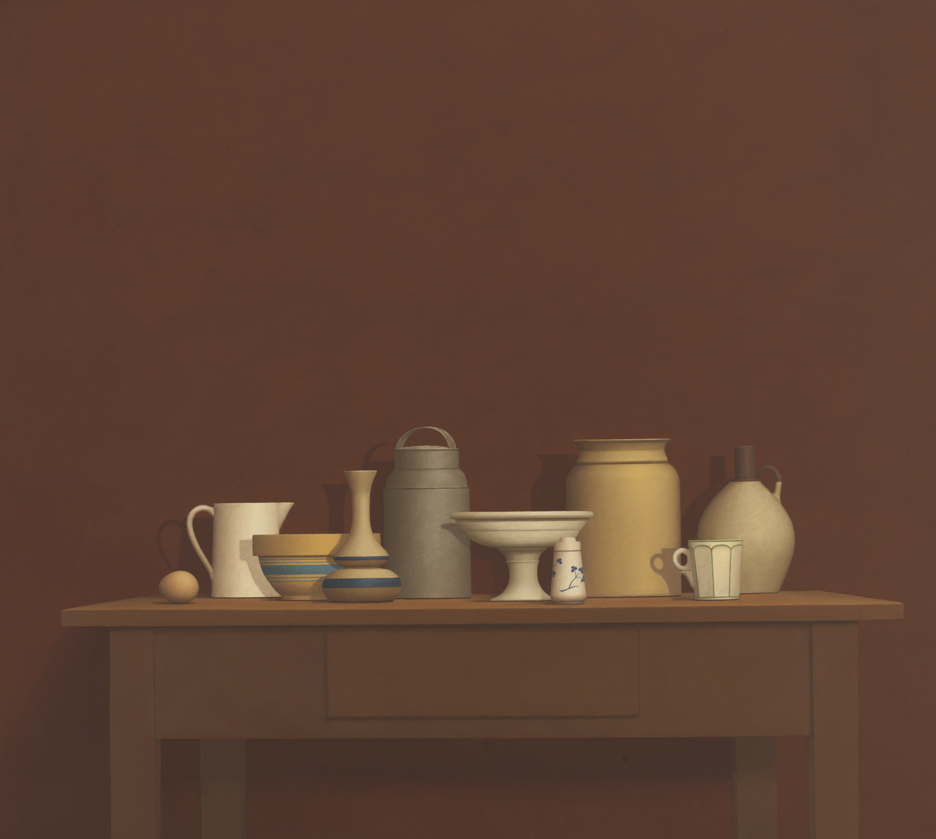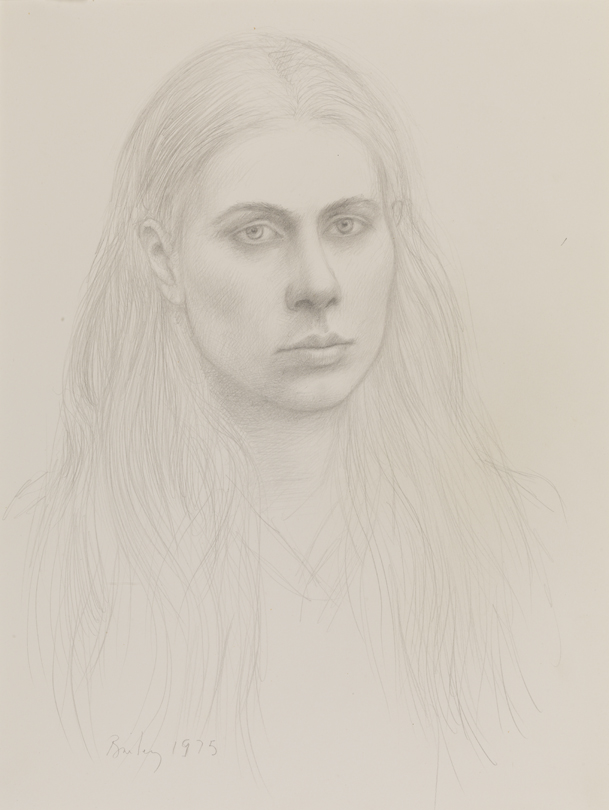
Monte Migiana Still Life
William Bailey
Noted for his architectonic still-life paintings bearing allusive Italian titles, Bailey studied with Josef Albers at Yale University after serving in the Korean War. Initially an abstract painter, he turned to the depiction of objects after a 1960 trip to Europe. His contemplative still lifes, with their quiet, somber colors, stand in marked contrast to the flamboyant still lifes of contemporary artists associated with the New Realist movement. While figures such as Janet Fish, Ralph Goings, Richard Estes, and Audrey Flack painted gleaming, photo-realist imagery that frequently doubled as commentary on the superficial, "plastic" aspects of contemporary life, Bailey used the still life to explore timelessness through unpretentious items that make no claim to a specific cultural era.
Consistently presented at eye level, Bailey purposefully rendered each object in his compositions with the same serene texture, thereby evoking a subtle sense of other-worldliness from familiar domestic objects. That Bailey painted his still lifes from imagination rather than observation enhances this uncanny idealization of form. In "Monte Migiana Still Life," the stark, shallow background space focuses attention on the row of objects, arranged as carefully as actors on a stage. The painting becomes a small drama of coexisting objects, the physical tension of two forms nearly touching or the modification of space and tone as two forms overlap and cast shadows.
Artist
Date of Birth
(1930-2020)
Date
1979
Medium
Oil on linen
Dimensions
54 1/4 x 60 3/16 in. (137.8 x 152.9 cm.)
Accession #
1980.2
Credit Line
Funds provided by the National Endowment of the Arts, the Contemporary Arts Fund, Mrs. Bernice McIlhenny Wintersteen, Pennsylvania Academy Women's Committee, Marion Stroud, Mrs. H. Gates Lloyd, and Theodore T. Newbold
Copyright
© The Estate of William Bailey / Artists Rights Society (ARS), New York
Category
Subject
We're so excited you're planning to visit PAFA!
Make time for art — visit us Thursday to Sunday.
Before reserving your tickets, please review helpful information about museum hours, accessibility, building access, and special admission programs.
If you have any questions, feel free to reach out to us at visitorservices@pafa.org — we’d love to help!

![[Figure study: female head]](/sites/default/files/artworkpics/1981_1_l.jpg)